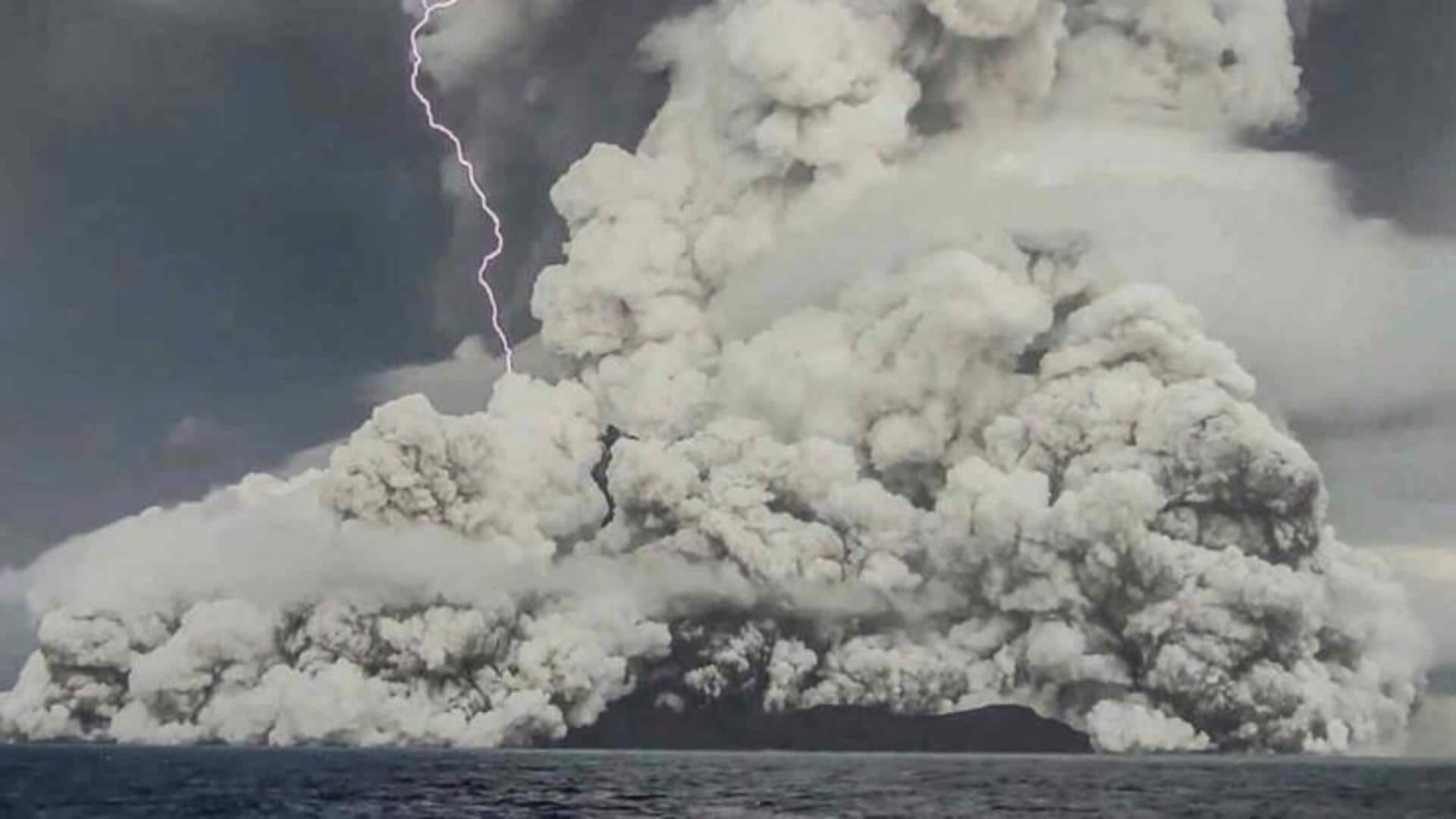
Tonga volcanic eruption unleashed fastest ocean flows ever documented
What's the story
The 2022 eruption of the Hunga Tonga-Hunga Ha'apai volcano in Tonga, in the southern Pacific Ocean, triggered the fastest underwater currents ever measured, according to a study published in the journal Science. This volcanic eruption is said to be the most powerful one that's ever recorded with modern equipment. It caused a tsunami, triggered "avalanche-like flows" and destroyed underwater communication cables connecting Tonga to other parts of the world.
Study
The currents could run at least 100km across the seafloor
A team from the UK's National Oceanography Centre (NOC) looked at the timings and locations of cable damage to estimate the speed of the ocean flows. The currents were found to be so powerful that they could run at least 100km across the seafloor and wreck the underwater cables, said Mike Clare of the NOC. These flows were faster than currents triggered by earthquakes, floods, or storms, according to the study.
Details
The eruption sent debris flying at 'record-breaking' speed
The eruption expelled volcanic debris, rocks, ash, and gas at an "unprecedented distance and at record-breaking speed" across the seafloor, reaching speeds of 122km/h, notes the study. The eruption plume soared up to 57km, falling into the water and onto steep underwater slopes, said Clare. The force released by the eruption is equivalent to hundreds of atomic bombs. The subsequent tsunami it triggered is said to have killed at least three people and destroyed homes in Tonga.
Insights
'Explosive underwater eruptions are poorly understood'
There are several volcanoes that lie beneath the ocean, but only a few are monitored, leaving coastal populations and critical infrastructure at risk. "An estimated 75% of Earth's volcanoes are underwater, and 20% of all fatalities caused by volcanic eruptions since 1600 CE have been associated with underwater volcanism," the study claimed. "Yet, explosive underwater eruptions are poorly understood."